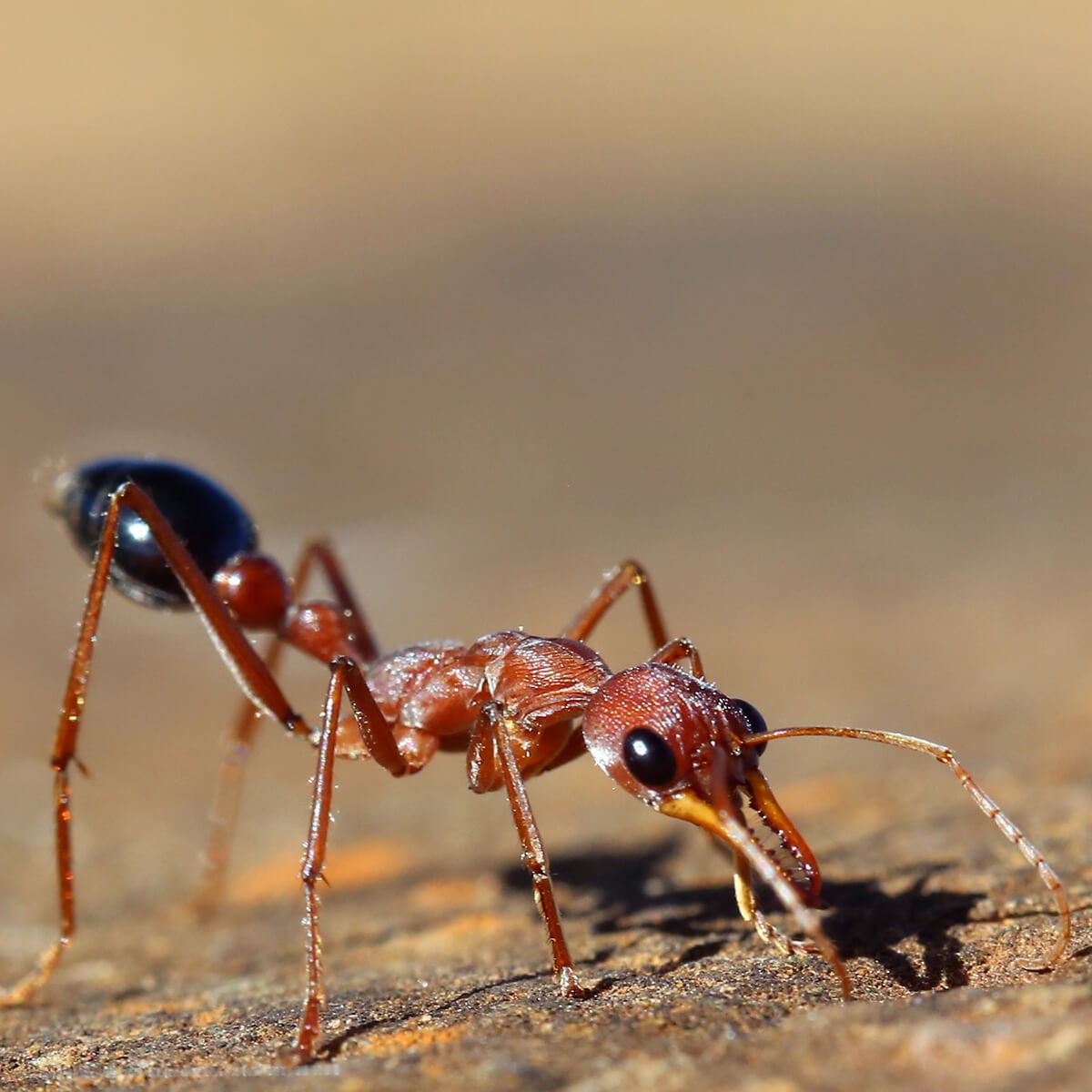Bull Ants
The bull ants or Myrmecia Gulosa as their scientific name is, are a species of very aggressive, large insects mainly found in Australia. Commonly called jumper ants, they’re a pain to deal with.
Bull ants characteristics

- Scientific name: Myrmecia Gulosa
- Colour: Black with some red colour on the abdomen
- Body: Strong and large mandibles, divided into three sections: the head, node, and postpetiole
- Size: 8mm to 40mm
- Antennae: 2, consists of 13 elements
- Bites or stings: Venomous sting
- Danger: Have a lethal effect on humans if numerous stings occur. Anaphylactic shock is the extreme reaction of the human body to an antigen.
- Region: Australia
Bull ant life cycle
- When the queen starts to mate, she digs the whole within the nest and lay eggs there. The species build two types of nests - simple ones with a notable shaft in the centre of the hill, and more complex ones which are structured underground and surrounded by mounds.
- The bull ants' life cycle passes through four stages - eggs, larvae, pupae and mature phases. The full transformation from egg to an adult takes several months.
- Almost all of the hatched eggs are born female. All of the eggs from the hatched badges usually grow in a particular role - workers or soldiers.
- The queen bull ant actually goes out to scout for food for the baby ants on her own.
Learn some useful: Ant Proofing Tips
Bull ant habits
- While searching for a colony up to four queen ants work together to find a proper nesting area. After the first generation of worker ants is born, they fight each other to the death until one queen is left alive to develop the colony.
- Bulldog ants usually nest outside - under the soil, rocks, logs, in forests and gardens. They can also inhabit sandplain, desert areas and coastal areas.
- Bull ant colonies consist of three types of ants: female workers (sterile), fertile females and winged fertile males. Each type of ant has its place in the nest with sterile female worker ants hunting on the ground. Fertile winged females fly off from the nest to create their own nest and winged males fly off to search for queens to mate with before they die.
- These ants communicate with each other by touch and smell, something that isn’t seen in any other ant species in the world.
Interesting facts about bull ants
- Bull ants are among the smartest ants in the world. They are very aggressive, especially if they feel their habitat is threatened. Bulldog ants can sting multiple times. They use their mandibles both for hunting and protection.
- Some of the bull ants show jumping behaviour, and they can jump more than five centimetres.
- Unlike other ant species, their large compound eyes provide them with exceptional sight. Each eye consists of 3000 facets.
- Worker ants are mainly hunters. They don't scout for food and cannot leave a trail of scents for the other ants.
- The winged male bull ants can pollinate flowers. While this is something rare, they are observed to pollinate orchid between April and June.
- Bull ants are usually defensive. They'll attack mainly around their nest to protect it. If the nest is disturbed, a large force of worker ants will come out from the colony to attack and kill the intruder.
Sometimes, trying to deal with these nasty creatures on your own can do more harm than good. If you're worried you might have an ant infestation, turn to an ant control specialist.